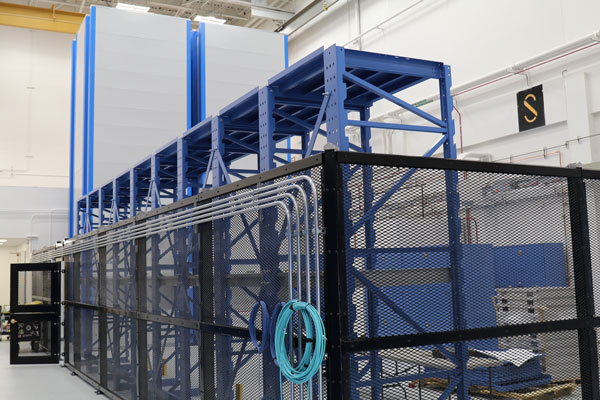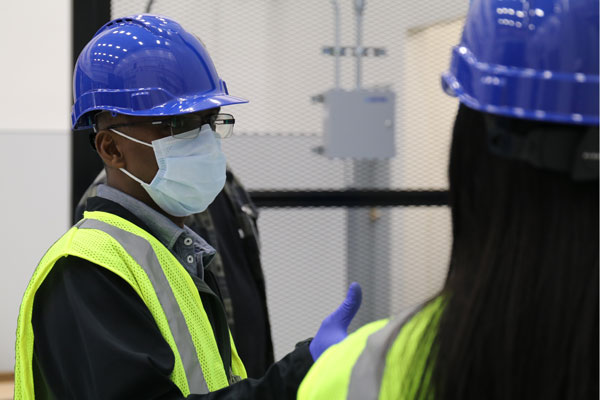New facility at Livermore campus meets growing mission demands

Sandia is making a significant investment in the weapons systems engineering capability at its California site. Mike Hardwick, systems engineering director at Sandia’s California site, was joined on July 7 by Associate Labs Director for Integrated Security Solutions Andy McIlroy and other senior leaders in introducing the Sandia Programs Engineering and Assembly Research facility, the newest facility in nuclear weapons systems engineering at Sandia’s California site.
The SPEAR facility, which opened this summer, is the first of its kind at the California campus and expands Sandia’s capacity to assemble and electrically test nuclear weapons components and systems for the nation’s nuclear weapons stockpile.
Experiments performed at the facility will help weapons systems engineers deeply understand hardware systems performance to ensure the safety and reliability of the nation’s nuclear deterrent. Sandia is the design and engineering lab for non-nuclear components of the U.S. nuclear weapons stockpile.
“We wanted to both increase capacity and continue the high level of rigor with which we assemble our nuclear weapons systems, and that required an investment in a new facility,” Mike said. “The nuclear weapons modernization programs have a large workload for development tests and qualification tests. In partnership with our test assembly facility in New Mexico, the SPEAR facility will enable us to handle the growing demands of these programs.”

The 10,000-square-foot facility includes a laboratory for functional electrical testing of weapons assemblies. The lab is equipped with thermal chambers that enable Sandia engineers to perform electrical tests at simulated environment temperatures. Comprehensive data from tests performed at the SPEAR facility will allow systems engineers to determine whether weapons systems meet U.S. Department of Defense requirements and refine the hardware accordingly.
Additionally, in the facility’s large activity bay, systems engineers will have the space and equipment for building hardware models and securely storing components, equipment and assembled test units. The new facility also includes a portable weapons-system simulator, soldering benches with fume extraction hoods for spot repair, as well as test instrumentation, power supplies, wave-form generators and additional equipment to help ensure the parts are reliable and safe. Visitor workspaces and video teleconference rooms will facilitate close collaboration with Sandia systems engineers and their nuclear security partners.
After 18 months of work to renovate and certify the high-bay facility, the opening of SPEAR represents the newest chapter in the long history of the facility. Built in the early 1990s, the complex was originally designed for laser research to support the Strategic Defense Initiative. When the complex was rebranded as the Micro and Nano Technologies Laboratories in 2002, multiple laboratories were established to support a range of missions, from materials science to satellite engineering.